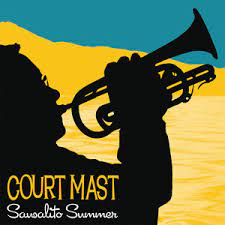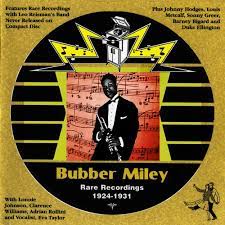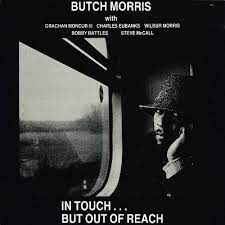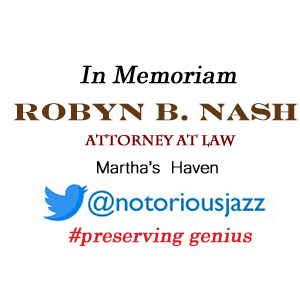
Daily Dose Of Jazz…
Court Mast was born Corky Miller on August 24, 1951 in Sunnyvale, California, where he took up the accordion and then trumpet in grade school. He went to Fremont High School, graduating in 1969. He traveled to Europe on tour with 120 high school and college musicians. Trumpet great Raphael Mendez was on board as guest artist, and Corky took six weeks of private lessons from the master. Returning to the Bay Area, he began performing in big bands around the South Bay and Peninsula and performed with the earliest version of the band that went on to fame as Tower of Power.
While taking performance and composition courses at De Anza College, Corky stayed active in a wide variety of bands, playing rock, jazz, Latin and Mexican music that kept this young working trumpeter onstage. By 1977 he moved to San Francisco, California where he led quartet and quintet jazz groups active on the North Beach music scene and in funky venues like the Hotel Utah.
Disillusioned with the direction that popular music, and jazz in particular, was moving in, in 1983 Miller stepped away from the music world. He became a surfer, changed his name to Court Mast, got into photography and became one of San Francisco’s leading commercial photographers. Then in the first decade of the new century his love of music returned and in 2008 he recorded his debut album Sausalito Summer
Composer and cornetist Court Mast, whose influences have been Henry Mancini, Chuck Mangione, Maurice Ravel, Duke Ellington, the Beatles, Steely Dan, Clifford Brown and Thad Jones, continues to compose and perform as well as maintain his photography.
More Posts: bandleader,cornet,history,instrumental,jazz,music

Daily Dose Of Jazz…
James Wesley “Bubber” Miley was born April 3, 1903 in Aiken, South Carolina into a musical family. At the age of six, he and his family moved to New York City, New York where, as a child, he occasionally sang for money on the streets, and later, at the age of 14, studied the trombone and cornet.
In 1920, after having served in the Navy for 18 months, he joined a jazz formation named the Carolina Five, and remained a member for the next three years, playing small clubs and boat rides all around New York City. After leaving the band at the age of 19, Miley briefly toured the Southern States with a show titled The Sunny South, and then joined Mamie Smith’s Jazz Hounds, replacing trumpeter Johnny Dunn. They regularly performed in clubs around New York City and Chicago, Illinois. While touring in Chicago, he heard King Oliver’s Creole Jazz Band playing and was captivated by Oliver’s use of mutes. Soon Miley found his own voice by combining the straight and plunger mute with a growling sound.
Miley’s talent and unique style were soon noticed in New York’s jazz scene by Duke Ellington who wanted him to jump in for trumpeter Arthur Whetsel. His collaboration with Ellington has secured his place in jazz history. Early Ellington hits, such as Black and Tan Fantasy, Doin’ the Voom Voom, East St. Louis Toodle-Oo, The Mooche, and Creole Love Call, prominently featured Miley’s solo work.
After leaving Ellington’s orchestra in 1929, Bubber joined Noble Sissle’s Orchestra for a one-month tour to Paris, France. After returning to New York, he recorded with groups led by King Oliver, Jelly Roll Morton, Hoagy Carmichael, Zutty Singleton and with Leo Reisman’s society dance band. In 1930, he recorded six songs for Victor Records under the name Bubber Miley and his Mileage Makers, a formation of thirteen musicians including clarinetist Buster Bailey.
His alcoholism terminally affected his life. Trumpet and cornetist Bubber Miley who specialized in the use of the plunger mute, transitioned from tuberculosis on May 20, 1932 on Welfare Island in New York City.

Daily Dose Of Jazz…
Butch Morris was born Lawrence Douglas Morris on February 10, 1947 in Long Beach, California. Before beginning his musical career, he served in the U.S. Army as a medic in Germany, Japan and Vietnam during the Vietnam War. He came to attention with saxophonist David Murray’s groups in the late 1970s and early 1980s.
>Morris led a group called Orchestra SLANG. The group features drummer Kenny Wollesen, alto saxophonist Jonathon Haffner, trumpeter Kirk Knuffke and others. He performed and presented regularly as part of the Festival of New Trumpet Music, held annually in New York City. He wrote most of the incidental music for the 1989 TV show, A Man Called Hawk, which starred Avery Brooks, with whom he co-wrote the theme music, along with Stanley Clarke. He also played with well-known artist and would-be drummer A.R. Penck in 1990.
The originator of Conduction (a term borrowed from physics), a type of structured free improvisation where Butch directs and conducts an improvising ensemble with a series of hand and baton gestures.
Cornetist, composer and conductor Butch Morris, known for pioneering his structural improvisation method Conduction, transitioned from lung cancer on January 29, 2013, at the age of 65 in New York City.
More Posts: bandleader,composer,conductor,cornet,history,instrumental,jazz,music

Daily Dose Of Jazz…
William Crickett Smith was born on February 8, 1881 in Emporia, Kansas, the child of Tennessee Exodusters. His professional career began in childhood, performing in Nathaniel Clark Smith’s Picaninny Band before moving into minstrel troupes, vaudeville and cabaret.
In 1913-1914, he made several early recordings with James Reese Europe’s group, the Clef Club Society Orchestra. Between 1914 and 1919, he performed in the Ford Dabney Orchestra, the resident band at Florenz Ziegfeld’s Broadway cabaret, Midnight Frolics. Between 1917-1919, they produced several dozen phonographs.
By 1919 Smith had relocated to Paris, France playing with Louis Mitchell’s Jazz Kings until 1924. The group recorded for Pathe Records. He became the leader of Mitchell’s group in 1923. He went on to tour France, Spain and Russia with his own bands from 1925 to 1933. However, during the Depression, he spent nine years in Southeast Asia, working with Herb Flemming, Leon Abbey, and Teddy Weatherford, mostly in Bombay and Batavia. In 1936, he recorded with a group called the Symphonians.
Around 1943 cornetist and trumpeter Crickett Smith, who played jazz blues and ragtime, returned to New York City and the following year transitioned on August 30, 1944.
More Posts: bandleader,cornet,history,instrumental,jazz,music,trumpet

Daily Dose Of Jazz…
Merritt Brunies was born on December 25, 1895 into a well-known musical family in New Orleans, Louisiana. Among its members were trombonist George Brunies and cornetist Albert Brunies.
Merritt led his own band, The Original New Orleans Jazz Band, from 1916 to 1918. Though this ensemble never recorded, it existed before both Jimmy Durante’s New Orleans Jazz Band and the Original Dixieland Jazz Band. Following this, he formed another group which played at Friar’s Inn in Chicago, Illinois directly after the stint by the New Orleans Rhythm Kings.
He played regularly in New Orleans in the 1930s, however, by 1946 he moved to Mississippi. There he played with his brothers in a Dixieland jazz band until his retirement. Trombonist and cornetist Merritt Brunies transitioned on February 5, 1973 in Biloxi, Mississippi.
More Posts: bandleader,cornet,history,instrumental,jazz,music,trombone




